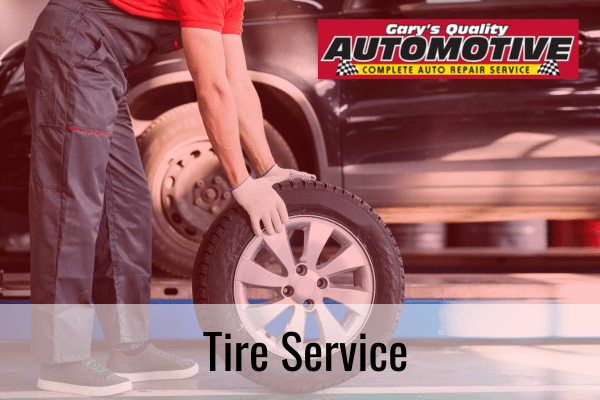What are the signs of bad tires?
Perhaps nothing is as important as tires to a vehicle. They ensure the vehicles stay on the road, maintain friction, and offer control. Tires may however wear out with time and this may have a huge impact on their performance and safety. Drivers should be able to identify indicators of bad tires and replace them immediately to minimize the chances of accidents and improve driving. The need for different signs that signal tire service will be discussed in this article.
What are the Signs of Bad Tires?
- Tread Wear: One of the most evident signs of worn-out tires is excessive tread wear. A tire’s tread provides traction so it grips the road. The worn-out tires have a lower depth of tread which leads to poor traction. To confirm the tread wear, the “penny test” can be undertaken by drivers. When inserted in the tread groove upside down, it should be apparent that the tread depth is at the minimum safe and legal limit.
- Bulges and Blisters: Internal damage is characterized by bulges and blisters on the sidewall of a tire. These susceptibilities can eventually cause blowouts as drivers drive. Regular inspection of the sidewalls can be used to detect this problem.
- Vibrations: An over-vibration of a vehicle while on a journey may be a pointer to a situation where the tires are not balanced or are not aligned. Such uneven wear and tear negatively affects the vehicle handling and performance.
- Uneven Tread Wear: In case of uneven tread wear, the problem might indicate mechanical issues in the vehicle like improper alignment or suspension issues. The causes for it may include low-grade tires and improper tire pressure. This is why proper tire service and continuous rotation of the tires will always be necessary.
- Cracks and Cuts: If there are cracks, cuts, or punctures on the surface of the tire it can affect the integrity of the tire structure. These losses will only be increased as time progresses, and therefore, the risk of tire failure. Tires should be checked for any visible damage like sidewall cracks or punctures and they must be repaired or replaced accordingly.
Proper care of tires is critical in ensuring a vehicle’s safety and performance. Every driver should be aware of the signs of bad tires. Regular inspections and prompt replacement will enable drivers to avoid accidents and ensure optimal performance on the road. It is advisable to visit a professional mechanic or a tire expert in the event of any signs of bad tires. Prioritizing tire maintenance allows drivers to experience better driving and safety for themselves and their passengers on the road.
Concerned about what are the signs of a bad tire? Contact our ASE Certified Technicians at Gary’s Quality Automotive for more information about tire service and to schedule an appointment. Our auto shop proudly serves vehicle owners in Grand Island, NE, Wood River, NE, and Doniphan, NE.

Perhaps nothing is as important as tires to a vehicle. They ensure the vehicles stay on the road, maintain friction, and offer control. Tires may however wear out with time and this may have a huge impact on their performance and safety. Drivers should be able to identify indicators of bad tires and replace them immediately to minimize the chances of accidents and improve driving. The need for different signs that signal tire service will be discussed in this article.
What are the Signs of Bad Tires?
- Tread Wear: One of the most evident signs of worn-out tires is excessive tread wear. A tire’s tread provides traction so it grips the road. The worn-out tires have a lower depth of tread which leads to poor traction. To confirm the tread wear, the “penny test” can be undertaken by drivers. When inserted in the tread groove upside down, it should be apparent that the tread depth is at the minimum safe and legal limit.
- Bulges and Blisters: Internal damage is characterized by bulges and blisters on the sidewall of a tire. These susceptibilities can eventually cause blowouts as drivers drive. Regular inspection of the sidewalls can be used to detect this problem.
- Vibrations: An over-vibration of a vehicle while on a journey may be a pointer to a situation where the tires are not balanced or are not aligned. Such uneven wear and tear negatively affects the vehicle handling and performance.
- Uneven Tread Wear: In case of uneven tread wear, the problem might indicate mechanical issues in the vehicle like improper alignment or suspension issues. The causes for it may include low-grade tires and improper tire pressure. This is why proper tire service and continuous rotation of the tires will always be necessary.
- Cracks and Cuts: If there are cracks, cuts, or punctures on the surface of the tire it can affect the integrity of the tire structure. These losses will only be increased as time progresses, and therefore, the risk of tire failure. Tires should be checked for any visible damage like sidewall cracks or punctures and they must be repaired or replaced accordingly.
Proper care of tires is critical in ensuring a vehicle’s safety and performance. Every driver should be aware of the signs of bad tires. Regular inspections and prompt replacement will enable drivers to avoid accidents and ensure optimal performance on the road. It is advisable to visit a professional mechanic or a tire expert in the event of any signs of bad tires. Prioritizing tire maintenance allows drivers to experience better driving and safety for themselves and their passengers on the road.
Concerned about what are the signs of a bad tire? Contact our ASE Certified Technicians at Gary’s Quality Automotive for more information about tire service and to schedule an appointment. Our auto shop proudly serves vehicle owners in Grand Island, NE, Wood River, NE, and Doniphan, NE.


